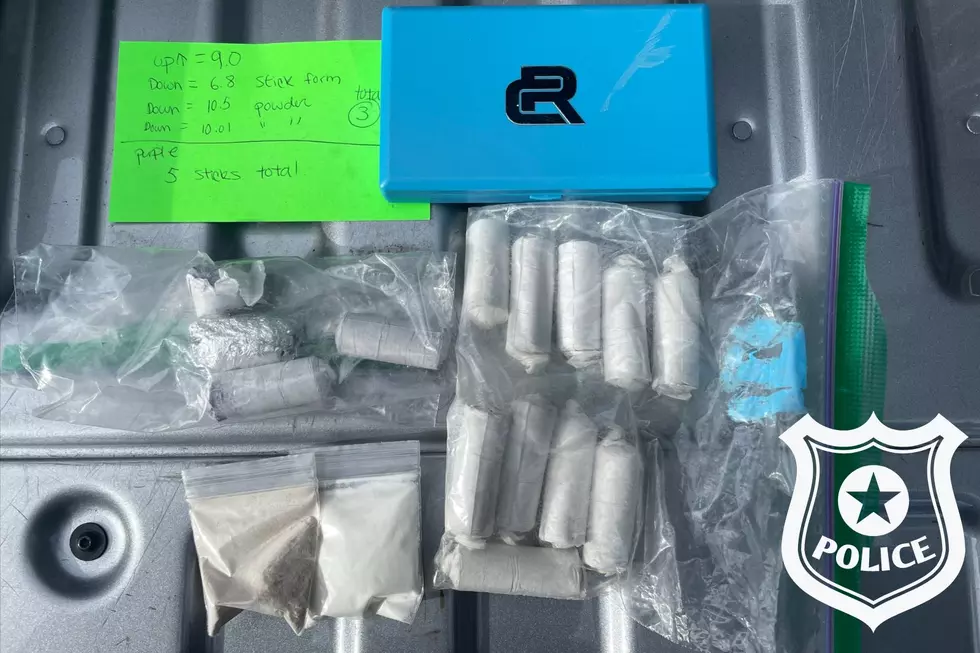
Day Tripping: The Maine Solar System Model
This week, we're headed up north a piece on our Day Trip, by visiting all the locations of the Maine Solar System Model. It's a unique display constructed by local high school and tech school students under the direction of some folks from the University of Maine in Presque Isle. When all is said and done, it's a fun and wildly creative project, that outs some scale to the size of our galaxy.
The 50 foot diameter ring representing the Sun begins at the Northern Maine Museum of Science. From there, the various planets begin stretching out down the rural roads of the area, bringing our Milky Way into perspective. The first six planets all live in spots along Route 1, between Presque Isle and Mars Hill. Uranus, Neptune, and Pluto, are all spread out between Mars Hill and Houlton. Check out this cool YouTube video showing what it's like:
It's a 55 mile drive altogether. Here is a great list of which towns have the "planets" in them, according to BigThink.com:
- The Sun is located in Folsom Hall, has a diameter of 49′ 6″ (15 m) and is represented by yellow-coloured beams and wall markings.
- Mercury (diameter: 2.1 inches, or 5.3 cm) is located in Burelle’s Garden at UMPI, 0.4 miles (640 metres) from the Sun.
- Venus (5.2 inches, 13.2 cm) is at the Budget Traveler Motor Inn, 0.7 miles (1.2 km) south of the Sun.
- The Earth (5.5 inches, 14 cm) is near Percy’s Auto Sales, 1 mile (1.6 km) from the Sun. A separate Moon (1.5 inch or 3.8 cm) is placed 16 feet (4.9 m) from the Earth’s axis.
- Mars (2.9 inches, 7.4 cm) is right next to the Welcome to Presque Isle sign, 1.5 miles (2.4 km) from the Sun.
- While it’s not difficult to miss the smaller rocky planets, the gas giants are easy to spot from the road. Jupiter has a diameter of 61.4 inches (1.52 m), and is located 5.3 miles (8.5 km) from the Sun. Four of its moons (4) are also represented: Io (1.6 inches, 4.1 cm), at 15 feet (4.6 m) from Jupiter’s axis; Europa (diameter 1.3 inches or 3.3 cm; distance 24 feet or 7.32 m); Ganymede (diameter 2.3 inches, 5.8 cm; distance 38 feet, 11.6 m); and Callisto (diameter 2.1 inches, 5.3 cm; distance 67 feet, 20.4 m).
- Just outside of the settlement of Mars Hill, and with its own visitor bench, is the spectacular model of Saturn, with a diameter of 51.9 inches (132 cm) and surrounded by a ring structure with an outer diameter of 117 inches (297 cm). Saturn is 9.7 miles (15.6 km) away from the Sun.
- Uranus is just outside of Bridgewater Town Hall, with a diameter of 22 inches (56 cm) at a distance of 19.5 miles (31.4 km) from the Sun.
- Neptune (21.3 inches, 54 cm) is in a field near Littleton, 30.6 miles (49.2 km) from the Sun.
- Pluto is a tiny single inch large (2.54 cm), accompanied by its even tinier moon Charon (0.5 inch or 1.8 cm, at 8.5 inches or 21.6 cm from Pluto’s axis), both placed at the Houlton Information Centre.
As you can see, it's a pretty detailed experience. The model has all the moons, and even a few other astronomical features as well. It's level of science-y awesomeness is a 10 all the way.
So hit the road, and learn some stuff for fun. I assure you, the kids will be entertained, you'll be entertained, and you can get the smallest idea of how vast our part of the universe really is. All you have left to do, is hit the road to the Solar System!
More From WQCB Brewer Maine









